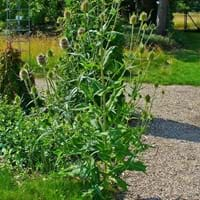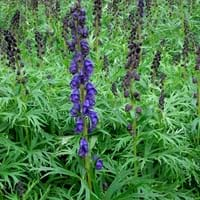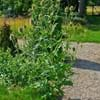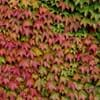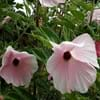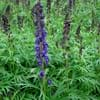Compare Fuller's Teasel and Aconitum
Life Span
Biennial
Perennial
Type
Flowering Plants, Herbs
Flowering Plants, Perennial
Origin
Europe, Asia
Not Available
Types
Not Available
Yellow Monkshood, Carmichael's Monkshood, Kamchatka Aconite
Habitat
Rocky areas, Semi desert, Subtropical climates
low mountains
USDA Hardiness Zone
5-8
4-8
AHS Heat Zone
8 - 5
Not Available
Sunset Zone
21,22
Not Available
Habit
Upright/Erect
Upright/Erect
Flower Color
Purple
Blue, Violet
Flower Color Modifier
Bicolor
Not Available
Fruit Color
Non Fruiting Plant
Non Fruiting Plant
Leaf Color in Spring
Green
Green
Leaf Color in Summer
Green
Green
Leaf Color in Fall
Green
Green
Leaf Color in Winter
Light Green
Green
Plant Season
Summer, Fall, Winter
Fall, Summer
Sunlight
Full Sun
Full Sun, Partial shade
Growth Rate
Very Fast
Medium
Type of Soil
Clay, Loam
Moist
The pH of Soil
Acidic, Neutral, Alkaline
Not Available
Soil Drainage
Average
Well drained
Bloom Time
Summer, Late Summer
Early Fall, Late Summer
Tolerances
Not Available
Not Available
Where to Plant?
Ground, Pot
Ground
How to Plant?
Seedlings, Stem Planting
Divison
Plant Maintenance
Medium
Medium
Watering Requirements
Average Water Needs
Do Not over Water, Requires regular watering
In Summer
Lots of watering
Lots of watering
In Spring
Moderate
Moderate
In Winter
Average Water
Average Water
Soil pH
Acidic, Neutral, Alkaline
Neutral
Soil Type
Clay, Loam
Average, Moist
Soil Drainage Capacity
Average
Well drained
Sun Exposure
Full Sun
Partial Sun
Pruning
Remove damaged leaves, Remove dead branches, Remove dead leaves, Requires very little pruning
Remove damaged leaves
Fertilizers
All-Purpose Liquid Fertilizer
All-Purpose Liquid Fertilizer
Pests and Diseases
Pests and diseases free
Citrus leaf miner, Leaf spot, Mealy bugs, Mites, Rust, Verticillium Wilt
Plant Tolerance
Drought
Drought
Flower Petal Number
Single
Not Available
Foliage Texture
Coarse
Bold
Foliage Sheen
Glossy
Matte
Allergy
Skin irritation
breathing problems, Nausea, Rapid Heartbeat, Sweating, Vomiting, weakness
Aesthetic Uses
Showy Purposes
Showy Purposes
Beauty Benefits
Not Available
Not Available
Environmental Uses
Air purification
Not Available
Medicinal Uses
No Medicinal Use
Gout, Heart problems, Inflammation, Joint pain, Kidney problems, Nerve pain, Wounds
Part of Plant Used
Flowers
Whole plant
Other Uses
Dried heads are used in floristry, Used as Ornamental plant
Used in herbal medicines
Used As Indoor Plant
No
No
Used As Outdoor Plant
Yes
Yes
Garden Design
Wildflower
Cutflower, Mixed Border
Botanical Name
DIPSACUS fullonum
Aconitum variegatum
Common Name
Fuller's Teasel
Aconite, Monkshood, Wolf's bane, Leopard's bane, Mousebane, Women's bane, Devil's helmet, Queen of all Poisons, or Blue rocket
In Hindi
Fuller's Teasel
बच्छनाभ
In German
Fullers Karde
Eisenhut
In French
Cardère à foulon
aconit
In Spanish
Cardo de Fuller
acónito
In Greek
Νεράγκαθο του Fuller
monkshood
In Portuguese
Carda de Fuller
Aconitum
In Polish
Fullera Oset
tojad
In Latin
Teasel Fullonis
aconitum
Phylum
Anthophyta
Magnoliophyta
Class
Magnoliopsida
Magnoliopsida
Order
Dipsacales
Ranunculales
Family
Dipsacaceae
Ranunculaceae
Clade
Angiosperms, Asterids, Eudicots
Angiosperms, Eudicots
Tribe
Not Available
Delphinieae
Subfamily
Dipsacoideae
Not Available
Difference Between Fuller's Teasel and Aconitum
If you are confused whether Fuller's Teasel or Aconitum are same, here are some features about those plants to help you choose better. Many people think that these two plants have the same characteristics, but one can see Fuller's Teasel and Aconitum Information and learn more about it. Fertilizers required for proper growth of Fuller's Teasel are All-Purpose Liquid Fertilizer, whereas for Aconitum fertilizers required are All-Purpose Liquid Fertilizer. Hence, one should know the basic difference between Fuller's Teasel and Aconitum if you are planning to have them in your garden to enhance its beauty.
<
Flowering PlantsImportance of Fuller's Teasel and Aconitum
Want to have the most appropriate plant for your garden? You might want to know the importance of Fuller's Teasel and Aconitum. Basically, these two plants vary in many aspects. Compare Fuller's Teasel and Aconitum as they differ in many characteristics such as their life, care, benefits, facts, etc. Every gardener must at least have the slightest clue about the plants he wants to plant in his garden. Compare their benefits, which differ in many ways like facts and uses. The medicinal use of Fuller's Teasel is No Medicinal Use whereas of Aconitum is Gout, Heart problems, Inflammation, Joint pain, Kidney problems, Nerve pain and Wounds. Fuller's Teasel has beauty benefits as follows: Not Available while Aconitum has beauty benefits as follows: Not Available.
Compare Facts of Fuller's Teasel vs Aconitum
How to choose the best garden plant for your garden depending upon its facts? Here garden plant comparison will help you to solve this query. Compare the facts of Fuller's Teasel vs Aconitum and know which one to choose. As garden plants have benefits and other uses, allergy is also a major drawback of plants for some people. Allergic reactions of Fuller's Teasel are Skin irritation whereas of Aconitum have breathing problems, Nausea, Rapid Heartbeat, Sweating, Vomiting and weakness respectively. Having a fruit bearing plant in your garden can be a plus point of your garden. Fuller's Teasel has showy fruits and Aconitum has no showy fruits. Also Fuller's Teasel is not flowering and Aconitum is flowering. You can compare Fuller's Teasel and Aconitum facts and facts of other plants too.
